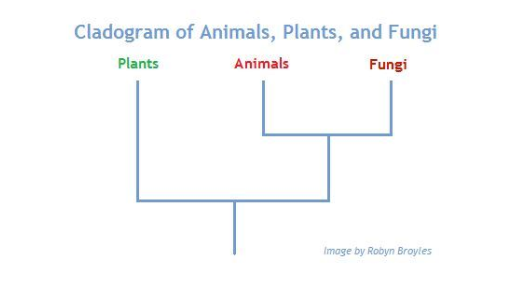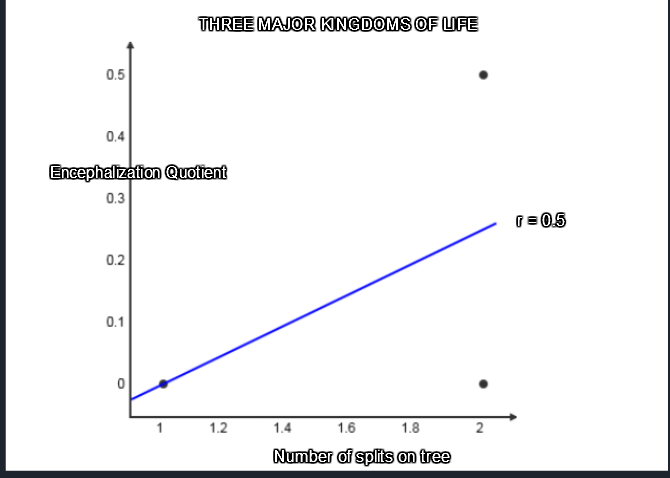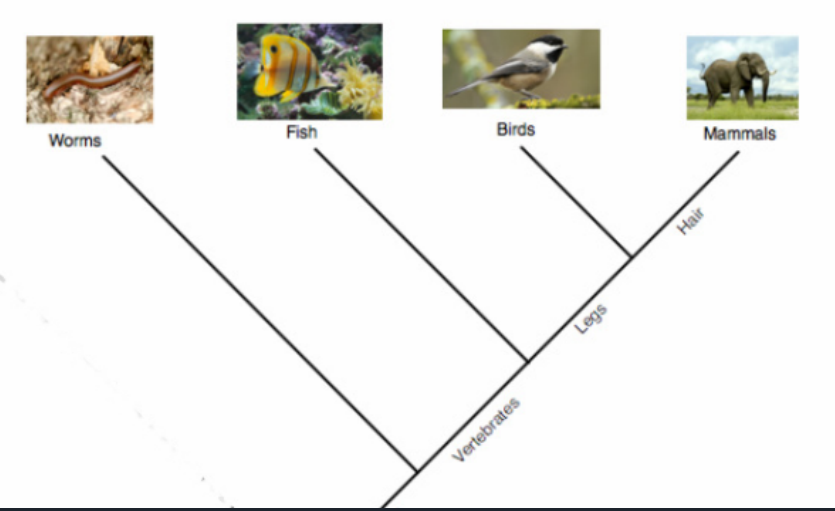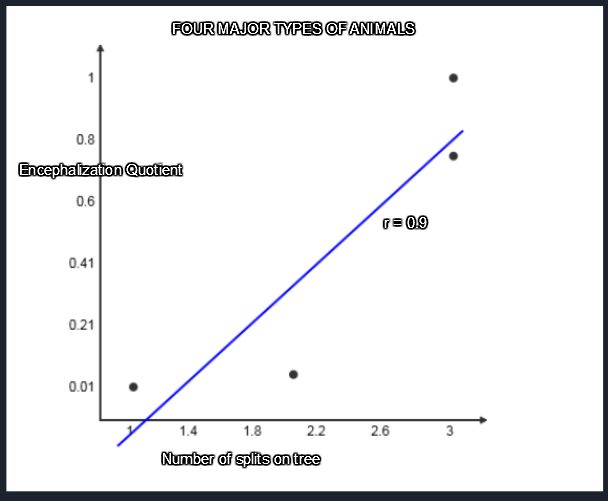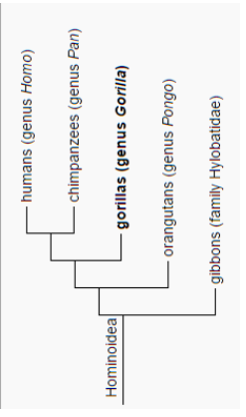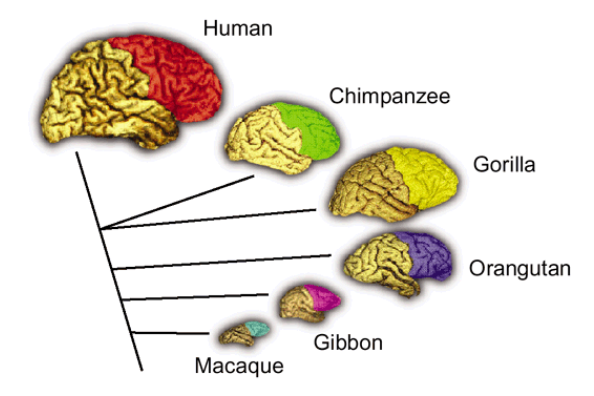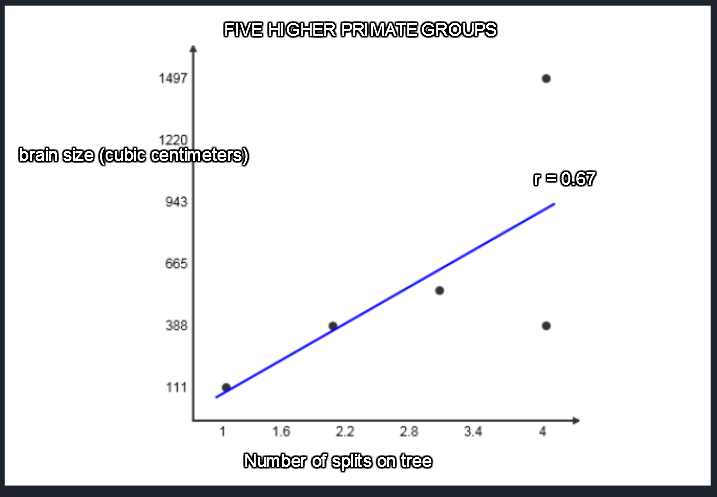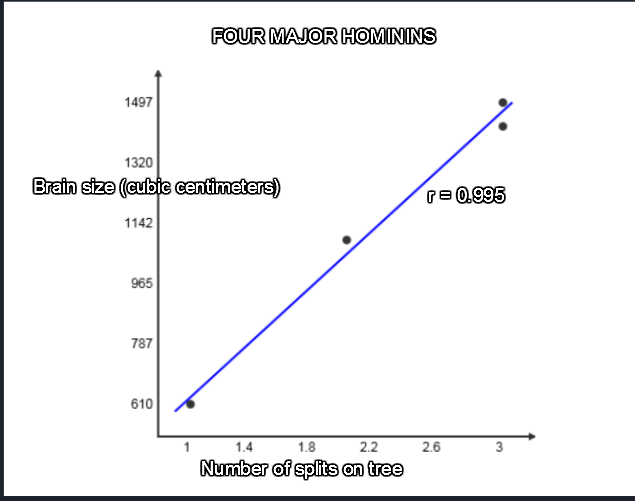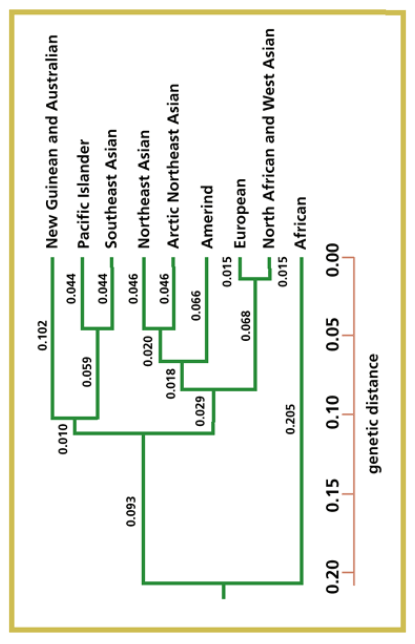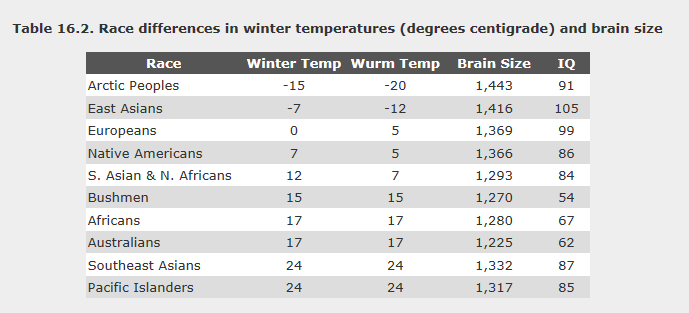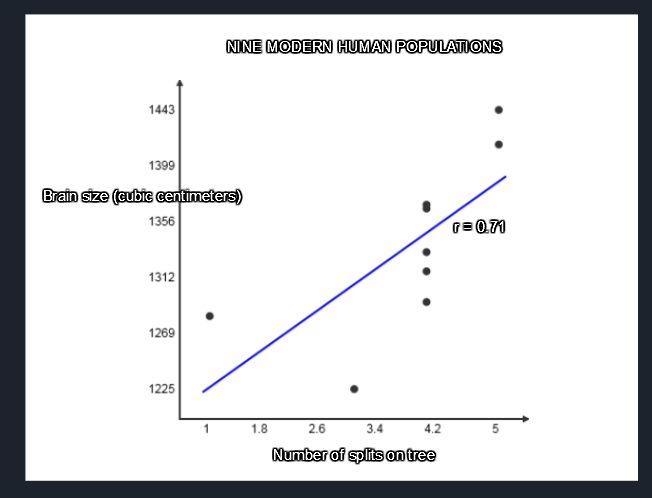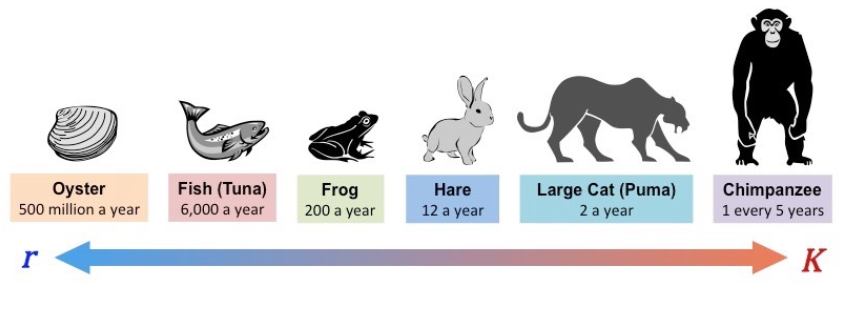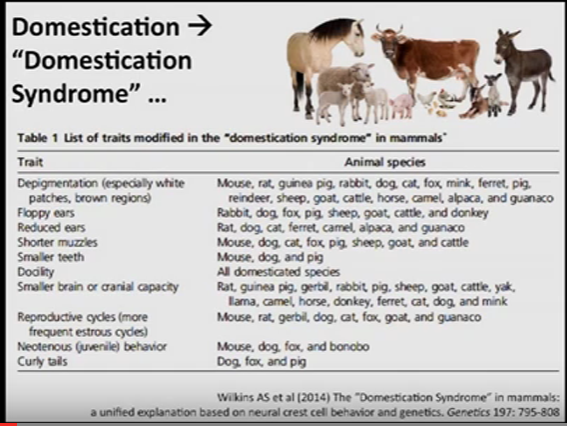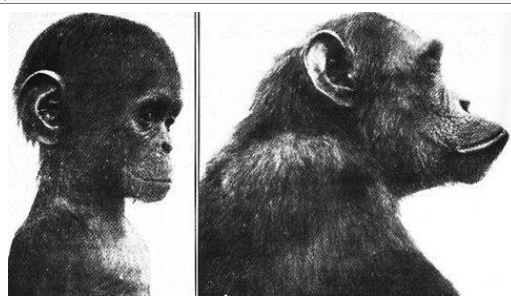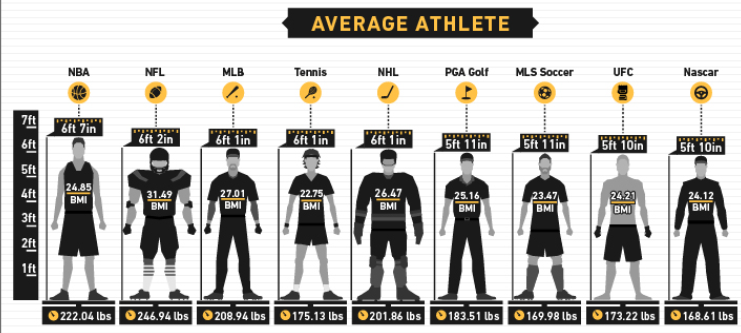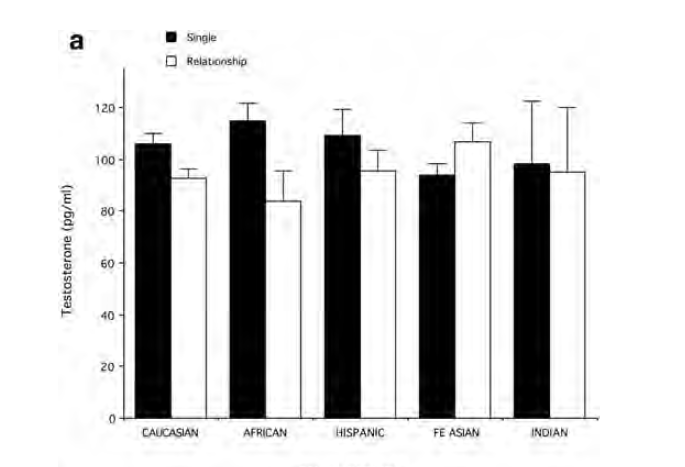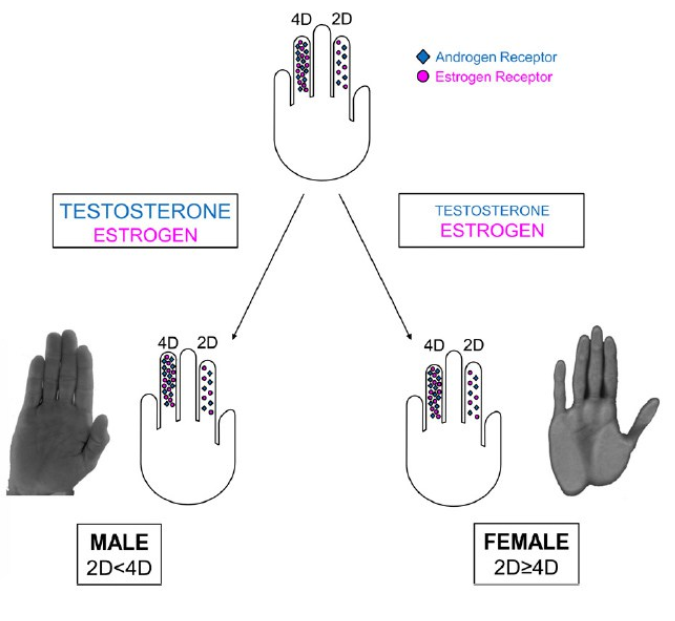[Note from PP, June 24, 2017: the following is a guest post and does not necessarily reflect the views of Pumpkin Person. Out of respect for the authors, please try to keep all comments on topic. I understand conversations naturally evolve, but at least try to start all discussions with on topic comments]
Introduction
Jean Phillipe Rushton (1943-2012) was a British-born Canadian psychologist known for his theories on genetically determined racial differences in cognition and behavior between Africans, Europeans, and East Asians. While marginal among experts, Rushton’s theories are still widely accepted amongst the proponents of eugenics and racialism. This article will focus on Rushton’s Differential K-theory which tries to apply the r/K selection model to racial differences in behavioral traits. To be fair, Rushton wasn’t the only one to use r/K selection as an explanation for psychological differences within humanity. For instance, some have associated the continuum with left-wing vs. right-wing ideologies. And although ecologists (the specialists of ecosystems) find applying r/K selection to humans inappropriate, the behavioral sciences have identified life-history patterns that roughly correspond to the colloquial fast vs. slow life differences in life history. For that reason, Rushton may have accidentally discussed variables and trends that are largely acknowledged by experts but his theory lies on a misunderstanding of core principles of the r/K model as well as using flawed (or non-existent) data.
Agents of selection
To begin, confusion about the modes of selection in an ecological context needs to be cleared up. There are classes of natural selection in ecological theory to be discussed: r-selection where the agent of selection acts in a density-independent way; K-selection where the agent of selection acts in a density-dependent way; and alpha selection which is selection for competitive ability (territoriality, aggression). Typical agents of K-selection include food shortage, endemic and infectious disease, and predation. Typical agents of r-selection temperature extremes, droughts, and natural disasters. Typical agents of alpha-selection are limited resources that can be collected or guarded, examples being shelter and food, showing that alpha-selection is closer to K than r (Anderson, 1991).
As you can see, the third mode of selection in ecological theory is alpha-selection—which Rushton failed to bring up as a mode of selection to explain racial differences in behavior. He didn’t explain his reasoning as to why he did not include it—especially since alpha-selection is selection for competitive ability. One may wonder why Rushton never integrated alpha-selection into his theory—either he was ignorant to the reality of alpha-selection or it could occur in numerous ecosystems—whether temperate/cold or tropical. The non-application of alpha-selection throws his theory into disarray and should have one questioning Rushton’s use of ecological theory in application to human races.
The Misuse of r/K Theory

Ecoregions
Rushton’s model starts with the erroneous assumption that the populations he describes as humanities three main races qualify as ecological populations. When studying the adaptive strategies of organisms, ecologists only consider species within their evolutionary niche—that is, the location that the adaptation was hypothesized to have occurred. When it comes to humans, this can only be done by studying populations in their ancestral environments. For this reason, Africans, Europeans, Amerindians—any population that is not currently in their ancestral environments—are not suitable populations to study in an evolutionary ecological context. The three populations no longer inhabit the environment that the selection was hypothesized to have occurred, so any conclusions based on observing modern-day populations must be viewed with extreme caution (Anderson, 1991). Even in the Old World, constant gene flow between ecoregions, as well as alterations of the environment due to agriculture and then industrialization, make such a study virtually impossible as it would require ecologists to study only hunter-gatherers that have received no admixture from other areas.
Rushton’s next misuse of the theory is not discussing density-dependence and density-independence and how they relate to agents of selection and the r/K model. K-selection works in a density-dependent way while r-selection works in a density-independent way. Thusly, K-selection is expected to favor genotypes that persist at high densities (increasing K) whereas r-selection favors genotypes that increase more quickly at low densities (increasing r) (Anderson, 1991). Rushton also failed to speak about alpha-selection. Alpha-selection selection for competitive abilities and, like with K-selection, occurs at high population densities, but could also occur with low population densities. Alpha-selection, instead of favoring genotypes that increase at high densities “it favours genotypes that, owing to their negative effects on others, often reduce the growth rate and the maximum population size” (Anderson, 1991: 52).
The r/K continuum
The r/K continuum—proposed by Pianka (1970)—has been misused over the decades (Boyce, 1984) and that is where Rushton got the continuum and applied it to human racial differences. Different agents of r-selection produce different selection pressures, as does K-selection. However, where Rushton—and most who cite him—go wrong is completely disregarding the agents of selection, along with perhaps the most critical part, reversing r and K in application to human races (if it were applicable to human races, that is), which will be covered below.
Dobzhansky (1950: 221) notes that “Tropical environments provide more evolutionary challenges than do the environments of temperate and cold lands.” It is erroneously assumed that living in colder temperatures is somehow ‘harder’ than it is in Africa. People believe that since food is ‘readily available’, that it must be ‘harder’ to find food in the temperate/Arctic environments so, therefore, selection for high intelligence occurred in Eurasians while Africans have lower intelligence since it’s so ‘easy’ to live in Africa, as well as other tropical environments.
Africans, furthermore, have been in roughly the same environment since the OoA migration occurred (the Ice Age ‘ended’ about 11,700 ya, although we are still in an Ice Age since the planets caps still have ice), and so any assumptions about it being ‘harder’ for the ancestors of Eurasians to survive and pass on their genes is a baseless assumption. Tropical environments that provide more evolutionary challenges than temperate and cold lands whereas the migration that occurred Out of Africa introduced humans to novel environments. As described above, endemic disease is an agent of K-selection whereas migration to novel environments are agents of r-selection. Thus, cold temperatures would be an agent of r-selection, not K-selection as is commonly believed, whereas endemic disease would be an agent of K-selection.
Even though intelligence nor rule-following were not included on the list of variables that Pianka (1970) noted on his r/K continuum, Rushton chose to include the variables anyway, even though selection for intelligence and rule-following can occur due to agents of r- or K-selection (Anderson, 1991: 55; Graves, 2002: 134-144). Pianka (1970) never gave experimental rationalization as to why he placed the traits he did on his continuum (Graves, 2002: 135). This is one critical point that makes his theory unacceptable in application to racial differences in behavior. By Rushton’s own interpretation of the r/K model, Africans would be selected for intelligence while Eurasians would be selected to breed more since novel environments (i.e., colder temperatures) are agents of r-selection, not K. Using the terms r- and K-selection to describe the traits of an organism is inappropriate; Rushton’s application of r/K theory to the traits of the three races, while ignoring that r/K describes a mode of natural selection “indicates circular reasoning rather than support for Rushton’s hypothesis” (Anderson, 1991: 59).
Reznick et al, (2002: 1518) write: “The distinguishing feature of the r- and K-selection paradigm was the focus on density-dependent selection as the important agent of selection on organisms’ life histories. This paradigm was challenged as it became clear that other factors, such as age-specific mortality, could provide a more mechanistic causative link between an environment and an optimal life history (Wilbur et al. 1974, Stearns 1976, 1977). The r- and K-selection paradigm was replaced by new paradigm that focused on age-specific mortality (Stearns 1976, Charlesworth 1980).” r/K selection theory was dropped for the much stronger life-history approach (Graves, 2002)—which uses some elements of r and K, but otherwise those terms are no longer used since other factors are more important as agents of selection, rather than density dependence and independence as was commonly thought.
Simple models?
One of the main reasons that Rushton’s r/K continuum gets pushed is because it’s a ‘simple model’ that so ‘parsimoniously’ explains racial differences. (e.g., cold winters supposedly take more intelligence to survive in and supposedly are an agent of K-selection.) But ecological systems are never simple; there are numerous interactions between the physical environment and the biological system which interact in complex ways.
Rushton’s use of this ‘simple model’—the r/K continuum—and its application to human races are wrong because 1) the three races described are not local populations; 2) the r/K continuum as described by Pianka (1970) is a poor representation of multidimensional ecological processes; and 3) cold weather is normally an agent of r-selection while endemic disease in Africa—as described by Rushton—is an agent of K-selection. Simple models are not always best—especially for organisms as complex as humans—so attempting to reduce complex biological and environmental interactions into a linear continuum is mistaken (Boyce, 1984). The simpler the ecological model, the more complex ecological sophistication is needed to understand and apply said model. So, although Rushton prefers simple models, in this context it is not apt, as complex biological systems interacting with their environments should not be reduced to a ‘simple model’.
Applying r/K to human races
If the r/K model were applicable to humans, then Caucasoids and Mongoloids would be r-selected while Negroids would be K-selected. Endemic and infectious disease—stated by Rushton to be an r-selected pressure—is actually a K-selected pressure. So Negroids would have been subjected to K-selected pressures (disease) and r-selected pressures (drought). Conversely, for Mongoloids, they migrated into colder temperatures which act in a density-independent way—hence, cold winters (temperature extremes) are an agent of r-selection.
Pianka’s (1970) r/K continuum “confuses the underlying pattern of life history variation with density-dependence, a process potentially involved to explain the pattern” (Gaillard et al, 2016). Furthermore, one cannot make assumptions about an organism’s traits and the selection pressures that caused them without studying said organism in their natural habitat. This seems to be impossible since one would need to study non-admixed hunter-gatherer populations that have received no outside contact.
Gonadotropin levels, testosterone, prostate cancer and r/K theory
Numerous attempts have been made to validate Rushton’s r/K theory. One notable paper by Lynn (1990) attempts to integrate gonadotropin levels and testosterone into Rushton’s r/K continuum. Lynn cites studies showing that blacks have higher testosterone than whites who have higher testosterone than Asians. He then implicates higher levels of both testosterone and gonadotropin levels as the cause for the higher incidence of prostate cancer (PCa) in black Americans.
Lynn (1990) asserts that by having fewer children and showing more care, this is shifting to a K strategy. So, according to Lynn, the best way to achieve this would be a reduction in testosterone. However, there is a fault in his argument.
The study he uses for his assertion is Ross et al (1986). He states that the two groups were both “matched for possible environmental factors which might affect testosterone levels” (Lynn, 1990: 1204). However, this is an erroneous assumption. Ross et al (1986) did control for relevant variables, but made two huge errors. They did not control for waist circumference (WC), and, perhaps most importantly, did not assay the subjects in the morning as close to 8 am as possible.
Testosterone levels are highest at 8 am and lowest at 8 pm. When doing a study like this—especially one to identify a cause of a disease with a high mortality rate—all possible confounds must be identified then controlled for—especially confounds that fluctuate with age. The cohort was assayed between the hours of 10 am and 3 pm. Since testosterone assay time was all over the place for both groups, you cannot draw evolutionary hypotheses from the results. Further, the cohort was a sample of 50 black and white college students—a small sample and a non-representative population. So it’s safe to disregard this hypothesis, on the knowledge that blacks don’t have significantly higher testosterone levels than whites.
Another correlate that is used to show that blacks have higher levels of testosterone is the higher rate of crime they commit. However, physical aggression has a low correlation with testosterone (Archer, 1991; Book et al, 2001) and thusly cannot be the cause of crime. Furthermore, the .14 correlation that Book et al, 2001 found was found to be high. Archer, Graham-Kevan, and Lowe (2005) show that even the .14 correlation between testosterone and aggression is high in a reanalysis of Book et al (2001) since they included 15 studies that should have been omitted. The correlation was then reduced by almost half to .08.
Other theories have been developed to attempt to explain the racial crime gap which centers around testosterone (Ellis, 2017), however, the theory has large flaws which the author rightly notes. Exposure to high levels of testosterone in vitro supposedly causes a low 2d/4d ratio and blacks apparently have the lowest (Manning, 2008). Though, larger analyses show that Asians—mainly the Chinese—have a lower digit ratio compared to other ethnicities (Lippa, 2003; Manning et al, 2007).
Testosterone also does not cause PCa (Stattin et al, 2003; Michaud, Billups, and Partin, 2015). The more likely culprit is diet. Less exposure to sunlight along with low vitamin D intake (Harris, 2006; Rostand, 2010) is a large cause for the prostate cancer discrepancy between the races since low vitamin D is linked to aggressive prostate cancer.
Even then, if there were, say, a 19 percent difference in testosterone between white and black Americans as asserted by Rushton and Lynn, it wouldn’t account for the higher rates of crime, nor higher acquisition and mortality from PCa. If their three claims are false (higher levels testosterone in African-Americans, larger penis size, and high levels of testosterone causing PCa), and they are, then this obliterates Rushton’s and Lynn’s theory.
Differential K Theory has, as noted above, has also been associated with a larger penis for black males in comparison to white males who have larger penises than black males (Lynn, 2012), which is not true, there is no reliable data and the data that does exist points to no evidence for the assertion. Lynn, (2012) also used data from a website with unverified and nonexistent sources. In a 2015 presentation, Edward Dutton cites studies showing that, again, Negroids have higher levels of testosterone than Caucasoids who have higher levels of testosterone than Mongoloids. Nevertheless, the claims by Dutton have been rebutted by Scott McGreal who showed that population differences in androgen levels don’t mean anything and that they fail to validate the claims of Lynn and Rushton on racial differences in penis size.
r/K selection theory as an attempt at reviving the scala naturae
Finally, to get to the heart of the matter, Rushton’s erroneous attempt to apply r/K selection theory to the human races is an attempt at reviving the scala naturae concept proposed by Aristotle (Hodos, 2009). The scala naturae organizes living and non-living organisms on a scale from ‘highest’ to ‘lowest’. However, these assumptions are erroneous and have no place in evolutionary biology (Gould, 1996). Rushton (1997: 293) attempted to apply r/K selection theory to human populations to try to revive the concept of the scala naturae, as can be clear by reading the very end of Race, Evolution, and Behavior.
This, of course, goes back to Rushton’s erroneous application of r/K selection theory to human races. He (and others) wrongly assert that Mongoloids are more K-selected than Africans who are more r-selected while Caucasians are in the middle—it also being asserted that K organisms, supposedly Mongoloids, “are the most K evolved” (Lynn, 2012). However, if r/K selection theory were applicable to humans, Mongoloids would be r and Africans would be K. Rushton further attempts to provide evidence for this ‘evolutionary progress’ by citing Dale Russel (1983; 1989) and his thought experiment troodon that he imagines would have eventually have gained human-like bipedalism and a large brain. Nevertheless, Rushton himself doesn’t say that it was only one dinosaur that would have supposedly had human-like intelligence and mobility, Reptile brains, however, lie outside of mammalian design (Hopson, 1977: 443; Gould, 1989: 318), and so, Russel’s theory is falsified.
This use of r/K selection theory as an attempt at bringing back the scala naturae may seem like an intuitive concept; some races/animals may seem more ‘advanced’ or ‘complex’ than others. However, since Rushton’s application of r/K selection theory is not correctly applied (nor does it apply to humans) and any of the claims that Rushton—or anyone else—makes while invoking the theory can be disregarded since he misused r and K selection.
In an attempt to “[restore] the concept of “progress” to its proper place in evolutionary biology,” Rushton (2004) proposed that g—the general factor of intelligence—sits atop a matrix of correlated traits that he proposes to show why evolution is synonymous with ‘progress’, including how and why K evolved organisms are so-called ‘more highly K evolved’—which is a sly attempt to revive the concept of scala naturae. Rushton’s (2004) paper is largely copy and pasted from his 1997 afterword in Race, Evolution, and Behavior—especially the part about ‘progress in evolution’ (which has been addressed in depth).
As can be seen, Ruston attempted to revive the scala naturae by giving it a new name, along with the misuse of ecological theory to make it seem like evolution is synonymous with progress and that K organisms are ‘more evolved’, makes no sense in the context of how ecological theory is (or was) applied to organisms. Rushton’s theory is correct, if and only if he applied r and K correctly to human races. Rushton did not apply r/K selection theory correctly to human races, so Rushton’s claims and any that follow from them are, on their face, immediately wrong. The claims by Rushton et al showing evolution to be ‘progressive’ have been shown to be demonstrably false since evolution is local change, not ‘progress’ (Gould, 1989; 1996).
Conclusion
Rushton’s r/K selection theory has enamored many since he proposed it in 1985. He was relentlessly attacked in the media for his proposals about black penis size, testosterone, brain size, sexual frequency, etc. However, the explanation for said racial differences in behavior—his r/K selection theory—has been rebutted summarily rebutted for misapplying ecological theory and not understanding evolution (Anderson, 1991; Graves, 2002). Even ignoring his racial comparisons, his application of the theory would still be unacceptable as he didn’t recognize agents of selection nor alpha selection.
Rushton is wrong because
(i) he misapplied r/K selection in application to human races (Africans would be K, Mongoloids would be r; rule-following and intelligence can be selected for in either environment/with any of the agents of r- or K-selection),
(ii) he arbitrarily designated Africans as r and Mongoloids as K due to current demographic trends (the true application of r and K is described above, which Rushton showed no understanding of),
(iii) the races do not differ in levels of testosterone nor penis size,
(iv) testosterone does not cause prostate cancer nor does it cause crime, so even if there was a large difference between blacks and whites, it would not explain higher rates of PCa in blacks, nor would it explain higher rates of crime,
(v) the scala naturae is a long-dead concept no longer in use by evolutionary biologists, along with its cousin ‘evolutionary progress’, while r/K selection is the attempt at reviving both,
(vi) human races are not local populations; since human races are not local populations then his application of r/K selection to humans is erroneous.
Rushton was informed numerous times he wrongly applied ecological theory to human populations. Yes, E.O. Wilson did say that if Rushton had noticed variation in any other animal that ‘no one would have batted an eye’, however, that does not say a word about Rushton’s incorrect application of r/K selection to human races. No race of humans is more ‘highly evolved’ than another.
Anyone who uses Rushton’s theory as an explanation for observed data is using incorrect/misapplied theory meaning that, therefore, by proxy, their theory is wrong. Rushton’s r/K theory is wrong, and people need to stop invoking it as an explanation for racial differences in behavior, politics, religion, and any other variable they can think of. If Rushton’s application of the theory is wrong, then it logically follows that anything based off of his theory is wrong as well.

